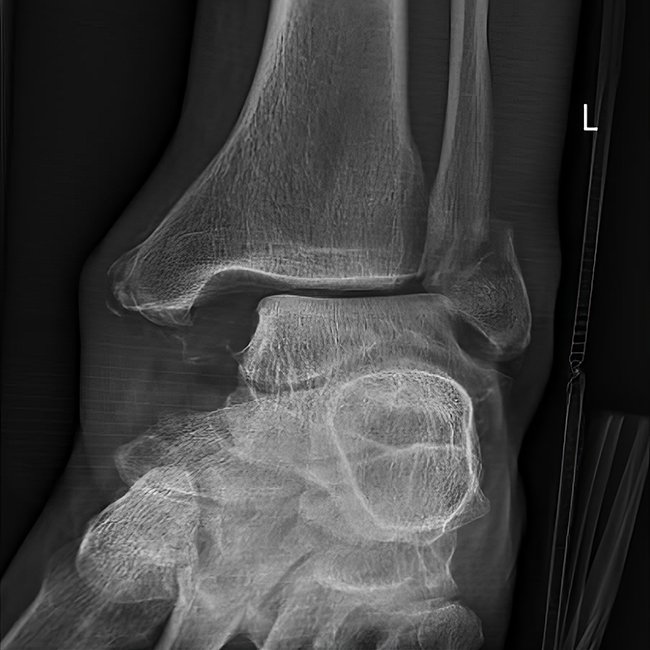Ankle Fracture Surgery at Norwest Private Hospital Sydney
Ankle Fracture Surgery to restore placement of the bones.
Ankle fractures can occur as a result many different circumstances including motor vehicle accidents, sporting accidents, or twisting the ankle joint. Some health conditions such as osteoporosis, obesity, smoking may also increase chances of the ankle bones fracturing.
Ankle fracture surgery aims to correct displaced bones by restoring their position and fixing them in place with hardware to ensure union is restored and the bones heal together.
What is Ankle Fracture Surgery?
Ankle fracture surgery is more commonly referred to open reduction and internal fixation surgery (ankle ORIF). The surgery encompasses different surgical techniques to restore the position of the bones (open reduction) and fix them (internal fixation) in place using a variety of screws, plates, or bands. This metal hardware is usually left inside the joint unless it causes pain and irritations.
The surgery aims to reposition displaced bones and ensure they can heal back together. In the ankle, often fractures involve the tibia, fibula, and talus bones becoming shattered or splintering into two of more pieces.
Not all ankle fractures require surgery to heal. If the bones remain in place and the ankle joint remains stable, often immobilizing the joint with a cast will be sufficient to allow the bones to heal.
An ankle ORIF is commonly used if any of the following conditions are met:
· The fracture involves injury that has shattered the bones into multiple pieces.
· The fracture involves bones that are severely out of place and cannot heal back together without internal fixation.
· The fracture involves an open wound where the bones have pierced through the skin.
· The ankle joint becomes unstable and is affecting your mobility.
How is Ankle Fracture Surgery performed?
The surgery is usually done under general anaesthetics. The surgeon will make an open incision near the fracture site, restore the bone position, and further fixate them with screws, plates, and/or bands. Metal hardware ensures the bones are kept in place when they fused back together. In most cases, the metal ware remains in the bones unless it causes pain or irritations.
In some injuries, especially involving severe trauma, some ankle fracture surgeries may need to be done in two stages. Hardware will be used to externally fixate the ankle (ex-fix) and allow the ankle swelling to subside before a permanent fixation surgery is complete. There is usually a 2-week period between the surgeries.
What are some risks and complications of Ankle Fracture Surgery?
Before undergoing any surgery, an orthopaedic specialist surgeon will discuss risks and potential complications with you and answer any questions you might have.
Some risks include:
Wound infection: this occurs in less than 1% of all procedures and can be treated with antibiotics. There is also additional risks of metal ware becoming infected.
Nerve damage: there is a small risk to losing sensation of the skin in area surrounding the surgical site, but this is very rare.
Blood clots: with any surgical procedure, there is a small risk of the blood clotting in the vessels causing pain and swelling. If you have known risk factors associated blood clots, the specialist may prescribe you with some blood-thinners during the recovery period. The risks are present but small. If you experience abnormal swelling and pain of the leg, please contact the specialist urgently.
Failure of metal hardware: metal hardware is made of durable and hard materials but there is a risk that metal ware can fail and become damaged to repeated stress and strains. Although uncommon, if hardware fails, a revision surgery may be needed.
How much does it cost to have Ankle Fracture Surgery?
The costs to have Ankle Fracture Surgery in Sydney depends on each individual treatment plan. Costs will depend on the treatment outcomes and complexity of the case presented. We provide full costs disclosure before initiating any treatments and therapies.
We accept most major private health insurance funding, and our knowledgeable staff can assist you with the health insurance claims process, but it is always helpful to contact your provider in advance to ensure that your insurance covers the orthopaedic procedure.
In most cases, you may be expected to pay a gap fee, but this is dependent on the cover of your private health insurance.
Associate Professor Roderick Kuo works only in the private health system and unfortunately does not maintain a public system list. However, some conditions may be treated with non-surgical methods such as physiotherapy that can be initiated after a consultation and review of your circumstances.
Here’s what to do next…
Research your condition and treatment options
We provide extensive information about Ankle Fractures on our conditions page.
Read our FAQ about Ankle Fracture Surgery below.
Do further research and contact us with any questions you may have.
Book a consultation with Associate Professor Roderick Kuo
Prior to your appointment, please obtain a referral from your General Practitioner. This will allow you to claim a Medicare rebate on the consultation fees.
Call or email our team at Specialty Orthopaedics to book your consultation.
Frequently Asked Questions about Ankle Fracture Surgery
-
You may be required to stay overnight in hospital after surgery.
-
Prior to surgery, you will be given general anaesthesia and a local injection around the operation area, so you remain pain-free during and after the surgery. During the recovery period, you may be prescribed some stronger painkillers to reduce any discomforts. In the recovery and rehabilitation period, you may experience some discomforts, but this can be managed with painkillers.
-
After the surgery is complete, your leg will be immobilized and placed in a plaster cast or hinged ankle brace. Afterwards you will be sent to the recovery unit and monitored for a period of time to allow the general anaesthesia to wear off and your body vitals to normalise. It is important at this time to report any discomfort, pain, or nausea you may have to the doctors as they can assess your need for painkillers or anti-nausea drugs when you are discharged.
You will be referred to a physiotherapist who will start you on a recovery programme. It is recommended that you follow the guidance of the physiotherapy programme as it will speed up your recovery drastically and allow you to get back on your feet sooner.
-
In the first week after the surgery, you should attempt to minimalise moving around unless necessary. There is strictly no weight bearing on the affected leg for six weeks.
Atempt to elevate your foot to the level of your heart to reduce swelling and take painkillers whenever you experience pain.
You may find some blood ooze at the site of the surgery which is normal. However, if you notice bleeding does not stop, please contact the orthopaedic specialist surgeon urgently.
-
For the first 6 weeks, you will have the foot in a plaster cast, splint or walking boot, and you should NOT weight bear. You may move around with the use of crutches, frame or knee scooter.
After 6 weeks, the ankle should have healed sufficiently to support weight-bearing independently.
-
Healing and recovery times are different for each individual person. In general, you should be able to return to work in 4 weeks if you mostly sit at work. You should allow for 12-16 weeks to recover if your work involves manual labour.
-
The typical follow-up appoints after you have been discharged is as following:
14 days after surgery
At the first appointment, the orthopaedic specialist surgeon review your condition at this appointment. You will need to remain in the plaster cast.
6 weeks after surgery
At this appointment, your recovery progress will be checked, and you should be able to weight-wear on the foot without supportive devices and the plaster will be removed.
Important: Information is provided for guidance only. Individual circumstances may differ and the best way to approach a condition is by individual medical consultation where a specialist can tailor a treatment plan to suit your needs.
Edited by Dr Roderick Kuo
Last updated: 5/5/24







